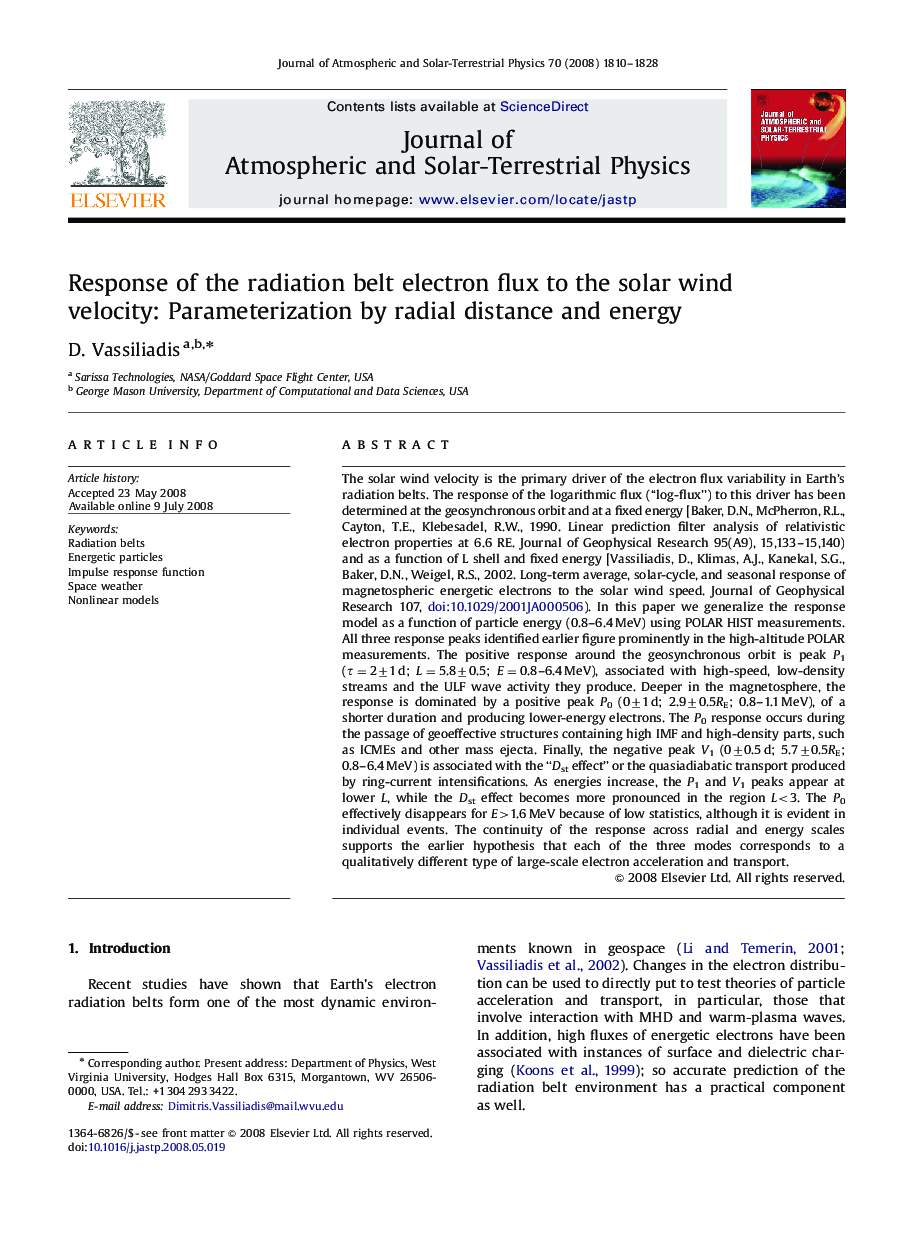| Article ID | Journal | Published Year | Pages | File Type |
|---|---|---|---|---|
| 1777735 | Journal of Atmospheric and Solar-Terrestrial Physics | 2008 | 19 Pages |
The solar wind velocity is the primary driver of the electron flux variability in Earth's radiation belts. The response of the logarithmic flux (“log-flux”) to this driver has been determined at the geosynchronous orbit and at a fixed energy [Baker, D.N., McPherron, R.L., Cayton, T.E., Klebesadel, R.W., 1990. Linear prediction filter analysis of relativistic electron properties at 6.6 RE. Journal of Geophysical Research 95(A9), 15,133–15,140) and as a function of L shell and fixed energy [Vassiliadis, D., Klimas, A.J., Kanekal, S.G., Baker, D.N., Weigel, R.S., 2002. Long-term average, solar-cycle, and seasonal response of magnetospheric energetic electrons to the solar wind speed. Journal of Geophysical Research 107, doi:10.1029/2001JA000506). In this paper we generalize the response model as a function of particle energy (0.8–6.4 MeV) using POLAR HIST measurements. All three response peaks identified earlier figure prominently in the high-altitude POLAR measurements. The positive response around the geosynchronous orbit is peak P1 (τ=2±1 d; L=5.8±0.5; E=0.8–6.4 MeV), associated with high-speed, low-density streams and the ULF wave activity they produce. Deeper in the magnetosphere, the response is dominated by a positive peak P0 (0±1 d; 2.9±0.5RE; 0.8–1.1 MeV), of a shorter duration and producing lower-energy electrons. The P0 response occurs during the passage of geoeffective structures containing high IMF and high-density parts, such as ICMEs and other mass ejecta. Finally, the negative peak V1 (0±0.5 d; 5.7±0.5RE; 0.8–6.4 MeV) is associated with the “Dst effect” or the quasiadiabatic transport produced by ring-current intensifications. As energies increase, the P1 and V1 peaks appear at lower L, while the Dst effect becomes more pronounced in the region L<3. The P0 effectively disappears for E>1.6 MeV because of low statistics, although it is evident in individual events. The continuity of the response across radial and energy scales supports the earlier hypothesis that each of the three modes corresponds to a qualitatively different type of large-scale electron acceleration and transport.
